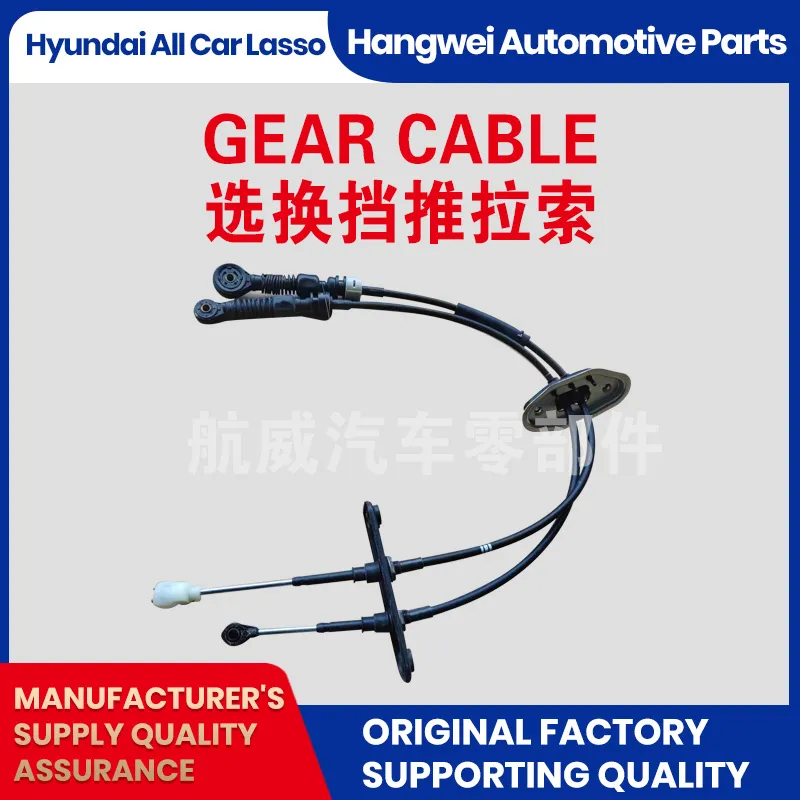Cable Solutions for Smooth Gear Shifting and Enhanced Bicycle Performance
Understanding Gear Cables A Key Component in Bicycle Performance
When it comes to cycling, performance and efficiency are paramount. One of the crucial components that contribute to a bike’s effectiveness is the gear cable. This essential part ensures smooth shifting and optimal power transfer between the rider and the bicycle, playing a vital role in the overall riding experience. In this article, we will explore the function, types, maintenance, and improvements of gear cables, underscoring why they deserve your attention.
The Function of Gear Cables
Gear cables are responsible for transmitting your shifting commands from the shifters (located on the handlebars) to the derailleurs (the mechanism that moves the chain across the gears). When you pull a shifter, it creates tension in the cable that signals the derailleur to shift the chain to a higher or lower gear. This mechanism is critical for controlling your speed, cadence, and overall cycling efficiency, especially in varying terrains.
A well-functioning gear cable contributes to quicker, more precise shifts, enhancing the rider's ability to tackle hills or sprint on flat terrains. Conversely, a worn or damaged cable can lead to sluggish shifting or missed gears, impeding performance and potentially leading to frustration during a ride.
Types of Gear Cables
There are two primary types of gear cables inner cables and outer casings. The inner cable is usually made of stainless steel, designed for flexibility and resistance to corrosion, while the outer casing is made from materials such as plastic or alloy, ensuring durability and protection for the inner cable.
Gear cables come in various lengths, materials, and designs, tailored to match different bike types and riding styles. For instance, road bikes may utilize lighter and thinner cables for less weight and improved aerodynamics, while mountain bikes may feature more robust cables to withstand rough terrains and harsher conditions.
gear cables

Maintenance of Gear Cables
To ensure optimal performance, regular maintenance of gear cables is essential. Riders should periodically inspect their cables for signs of fraying, rust, or other forms of damage. Keeping the cables clean and lubricated can prevent moisture buildup and enhance the lifespan of both the inner cable and the outer casing.
In addition to visual inspections, it is important to pay attention to the shifting performance. If you notice that shifts are becoming more laborious or imprecise, it may indicate a need for tightening, replacement, or lubrication of the cables. Maintaining the correct tension is crucial; either too much slack or excessive tension can lead to poor shifting and cable failure.
Upgrading Gear Cables
For performance-oriented cyclists, upgrading to high-quality gear cables can significantly impact the riding experience. Many manufacturers offer advanced options that promise reduced friction, improved durability, and smoother shifting. These upgraded cables often feature enhanced materials and construction techniques, catering to the needs of professional riders or avid enthusiasts.
Additionally, certain cables are designed specifically for specific riding conditions or styles. For example, some cables may be better suited for wet conditions, resisting rust and corrosion better than standard cables. Investing in high-quality gear cables can lead to enhancements in bike performance, allowing cyclists to unleash their full potential on the road or trail.
Conclusion
In the world of cycling, every component matters, and gear cables are no exception. Understanding their function, types, and maintenance can help riders achieve optimal performance and longevity of their bicycles. By taking care of your gear cables, upgrading to high-quality options when needed, and paying attention to shifting performance, you will take a significant step in elevating your cycling experience. Remember, smooth shifts lead to efficient rides, and it all starts with the crucial gear cable.
-
Upgrade Your Clutch System with Premium Hydraulic Clutch LinesNewsJul.31,2025
-
Unlock the Power of Precision with Our Throttle CablesNewsJul.31,2025
-
Unleash Power and Precision with Our Accelerator CablesNewsJul.31,2025
-
Experience Unmatched Safety with Premium Handbrake CablesNewsJul.31,2025
-
Enhance Your Vehicle's Performance with Quality Gear CablesNewsJul.31,2025
-
Workings of Clutch Pipe and Hose SystemsNewsJun.04,2025
